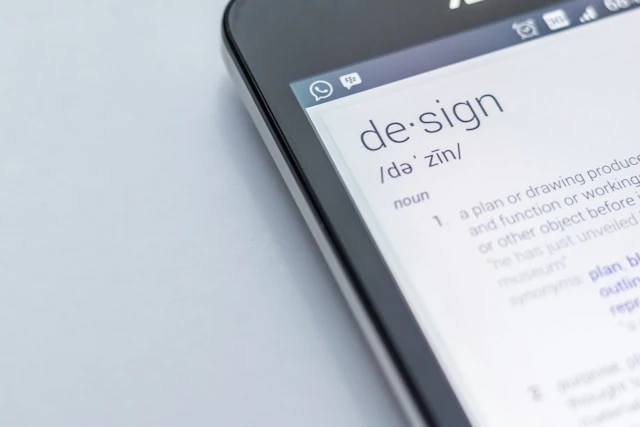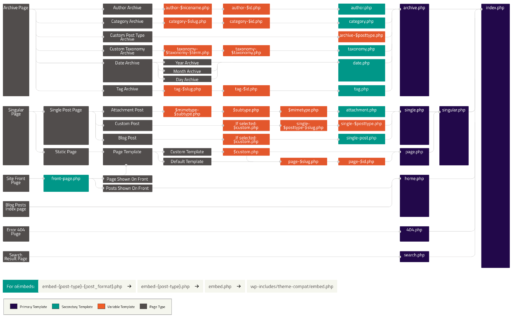WordPress, a widely used content management system, empowers millions of websites across the digital landscape. One of its key features is the ability to customize a website’s look and feel through themes. In this blog post, I will delve into the fundamentals of WordPress theme design, shedding light on the importance of themes and providing a basic understanding of the design process. I will focus on the new generation of WordPress themes called block themes.

Table of Contents
- Why WordPress Theme Design Matters
- The Anatomy of a WordPress Theme
- Creating a Basic WordPress Theme
- Customization in WordPress Theme Design
- Conclusion
Why WordPress Theme Design Matters
Themes play a crucial role in defining a website’s appearance. They determine the layout, color scheme, and overall aesthetics, allowing website owners to create a unique and visually appealing online presence. Whether you’re building a personal blog, a business website, or an e-commerce platform, choosing the right theme is essential for making a positive first impression on visitors.
The Anatomy of a WordPress Theme
A simple WordPress block Theme folder structure is like the one below (next, I will describe each):
- theme-slug (root folder)
- parts
- footer.html
- header.html
- etc
- templates
- intex.html
- single.html
- etc
- functions.php
- screenshot.png
- style.css
- theme.json
- parts
A WordPress theme consists of various components, each serving a specific purpose. These components include:
- parts: WordPress uses template parts to organize and display different website sections, such as the header, footer, and comments.
- templates: WordPress uses template files to display different website pages, such as 404, archive, posts, etc. These files work to generate the final web pages.
- functions.php: This file houses custom functions and code snippets that enhance the theme’s functionality. It allows for the incorporation of additional features and modifications.
- screenshot.png: It is an image that represents your theme and is shown in your WordPress website Admin Area > Appearance > Themes. The recommended dimensions are 1200px width and 900px height, should be .png and a maximum of 2MB in size.
- style.css:
- The stylesheet defines information about the theme, such as name, author, version, etc., that is used in some places, including your WordPress website’s Admin Area > Appearance > Themes.
- It also contains the custom CSS codes that dictate the website’s design elements or blocks that cannot be performed via theme.json or the Site Editor. “You have three places you can put your custom CSS, in order of recommendation: A block stylesheet, the css property in theme.json, and your theme’s main stylesheet (e.g., style.css)”. 1
- theme.json: It is the heart of a theme. You can enable and disable features in Site Editor, add font families and sizes, color palettes, spacing presets, style WordPress blocks, and much more.
There are other elements that a theme usually has, like the assets folder where we put custom CSS, JS, fonts, etc. I omit them for simplicity and will talk about them at the proper time.
Creating a Basic WordPress Theme
A basic understanding of HTML, CSS, and PHP is beneficial for those interested in crafting their themes. WordPress follows a hierarchy when selecting template files, making it essential to include files like headers and footers for a cohesive design.

The PHP file extension is used above. HTML files are used instead in block themes, but the template hierarchy is the same.
Customization in WordPress Theme Design
WordPress provides users with various customization options to tailor themes to their preferences without diving into complex coding. The Site Editor allows users to tweak colors, fonts, and other visual elements, providing a user-friendly interface for making personalized adjustments. The video below provides a glance at many things you can do with the Site Editor.
A Guide to Easy WordPress Theme Customization
Conclusion
In conclusion, WordPress theme design is vital to creating a captivating online presence. Whether you opt for pre-designed themes or venture into custom designs, understanding the basics of theme components and customization options is crucial. As you embark on your WordPress journey, keep experimenting, learning, and fine-tuning your themes to achieve a website that looks good and resonates with your audience. Stay tuned for more in-depth insights into the world of WordPress theme design in our upcoming posts.
References:
All Parts of This Series
- WordPress Theme Design: A Simple Overview for Beginners
- WordPress Themes: How to Design the Header & Footer
- How to Design Sidebars in WordPress Block Themes
- How to Register Custom Sidebars Area in WordPress Themes
- Typography in WordPress: Tips for a Better Theme Design
- How to Export a WordPress Block Theme with Two Methods

دیدگاهتان را بنویسید